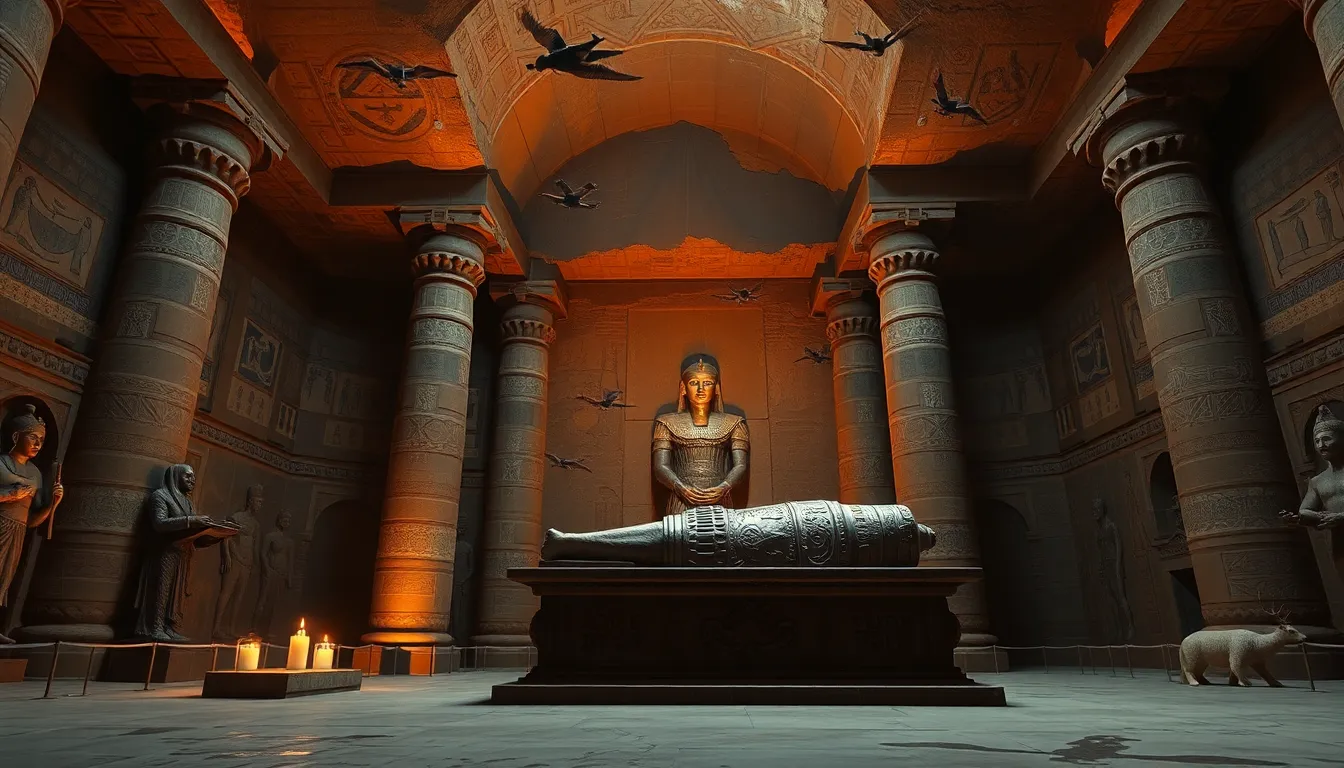The Tomb of Nefertari: A Royal Burial of Love
I. Introduction
Nefertari, often regarded as one of the most beloved queens of Ancient Egypt, holds a significant place in the annals of Egyptian history. Her tomb, located in the Valley of the Queens, stands as a testament to her importance and the love that her husband, Ramses II, had for her. This article explores the historical and cultural context of Nefertari’s tomb, emphasizing the theme of love that permeates the royal burial practices of Ancient Egypt.
II. Who Was Nefertari?
Nefertari was born into a noble family, her lineage suggesting a strong connection to the royal bloodline. She was the Great Royal Wife of Ramses II, one of Egypt’s most powerful pharaohs, who reigned during the 19th Dynasty. Nefertari’s influence extended beyond her role as a queen; she was a key figure in the political and cultural life of ancient Egypt.
- Background: Nefertari was likely the daughter of a high-ranking official and was married to Ramses II around 1300 BCE.
- Role as Great Royal Wife: Nefertari was not only Ramses II’s wife but also a trusted advisor and companion.
- Cultural Impact: She was revered in her own right, and her legacy influenced art, religion, and society in Ancient Egypt.
III. Discovery of the Tomb
The tomb of Nefertari was discovered in the early 20th century, specifically in 1904, by the Italian archaeologist Ernesto Schiaparelli. This discovery marked a significant milestone in Egyptology, revealing the grandeur of royal burial practices.
- Historical Timeline: The tomb was excavated and documented, providing insights into the burial customs of the time.
- Key Figures: Schiaparelli, along with his team, played a crucial role in unearthing the tomb and its treasures.
- Initial Reactions: The find was met with excitement, highlighting Nefertari’s status and the tomb’s artistic significance.
IV. Architectural Features of the Tomb
The architectural design of Nefertari’s tomb is both intricate and symbolic, reflecting the artistry of the time. The layout consists of a series of chambers adorned with vibrant frescoes and inscriptions that celebrate her life and afterlife.
- Tomb Layout: The tomb features a long corridor leading to a burial chamber, with various side rooms for offerings.
- Artistic Elements: The walls are covered in beautifully painted scenes depicting gods, goddesses, and Nefertari’s journey in the afterlife.
- Symbolism: The architecture incorporates elements designed to assist Nefertari in her journey to the afterlife, embodying the beliefs of resurrection and immortality.
V. Artistic Masterpieces Within the Tomb
The tomb of Nefertari is renowned for its artistic masterpieces, showcasing the incredible talent of ancient Egyptian artists. The murals within the tomb are not only visually stunning but also rich in meaning.
- Murals: The vivid colors and detailed depictions of mythological scenes are designed to protect and guide Nefertari in the afterlife.
- Artistic Techniques: Artists used tempera paint on dry plaster, a technique that allowed the colors to remain vibrant over millennia.
- Comparative Analysis: When compared to other royal tombs, Nefertari’s tomb stands out for its exceptional artistry and emotional depth.
VI. The Theme of Love in Nefertari’s Tomb
One of the most poignant aspects of Nefertari’s tomb is the representation of her love story with Ramses II. Their relationship was celebrated through various artistic expressions within the tomb.
- Love Story: Ramses II’s dedication to Nefertari is reflected in the grandeur of her tomb, a loving tribute to his favorite wife.
- Symbolic Representations: Artwork in the tomb often features scenes of Nefertari with Ramses, emphasizing their bond and mutual respect.
- Funerary Practices: Love and devotion played a significant role in Ancient Egyptian burial customs, with many tombs reflecting the affection between spouses.
VII. Preservation and Modern-Day Significance
Today, the Tomb of Nefertari is a critical site for both archaeological research and tourism. Preservation efforts are ongoing to maintain the integrity of the tomb’s artwork and architecture.
- Current State: The tomb is well-preserved, but environmental factors pose a constant threat to its condition.
- Technology in Conservation: Modern techniques, including climate control systems and digital documentation, are being employed to protect the tomb.
- Tourism and Education: The tomb attracts visitors from around the world, serving as an educational resource about Ancient Egyptian culture and the role of women in society.
VIII. Conclusion
Nefertari’s legacy is immortalized in her tomb, a symbol of love, devotion, and the cultural richness of Ancient Egypt. The Tomb of Nefertari continues to captivate scholars, tourists, and lovers of history alike, reminding us of the enduring power of love and memory in historical narratives. As we reflect on this extraordinary burial site, it serves as a poignant reminder of the deep emotional connections that shaped the lives of individuals in ancient civilizations.




